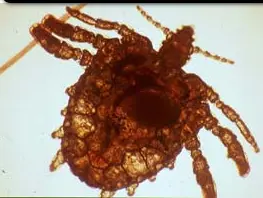Unveiling Pthirius pubis: Understanding the Diagnosis, Treatment, and Prevention of Pubic Lice Infestation
Pthirius pubis, commonly known as pubic lice, is a parasitic infestation primarily affecting the coarse body hair of the genital area, though it can also be found in the armpits, chest, and other areas of hair growth. These lice are typically transmitted through direct sexual contact but can also spread through infested clothing, bed linens, or towels. The presence of P. pubis can cause significant itching and discomfort due to the lice’s feeding activity on blood. Diagnosis is typically made through the identification of adult lice or nits (eggs) attached to hair shafts. Treatment involves topical pediculicides, such as permethrin or pyrethrins, and mechanical removal of nits. Preventative measures focus on safe sexual practices, regular washing of personal items, and treating all close contacts to avoid reinfestation. Given the stigmatization often associated with pubic lice, early diagnosis and treatment are crucial to prevent complications and reduce transmission.
